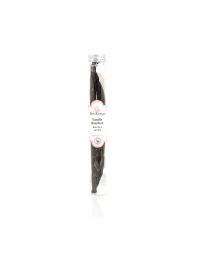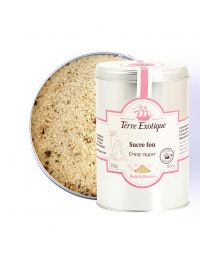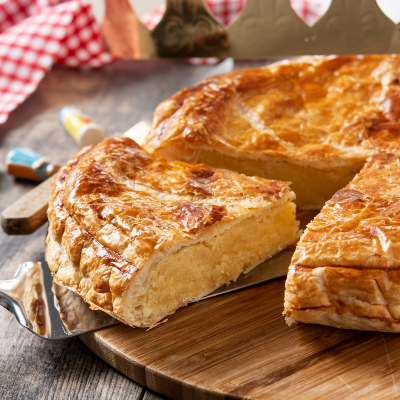The King Cake

Do you know the origins of the King Cake?

The King Cake originated during the Roman Saturnalia festivities, marking the end of winter and the gradual return of light. During these celebrations, social roles were reversed, and a fictitious king was elected by finding a hidden bean inside a round, golden cake, resembling the sun.
In Christianity, this tradition celebrates Epiphany, the visit of the Wise Men to baby Jesus. The cake symbolizes divine light and unity among believers gathered around a communal meal.

How long has it existed?

The modern King Cake dates back to the Middle Ages. In 1311, it was mentioned in the statutes of the Parisian bakers’ guild. Over the centuries, it evolved from a simple flat cake made of flour to puff pastry versions filled with almond cream, such as frangipane, which is now iconic in many French regions.

Why the name?


The name "King Cake" refers to Epiphany, honoring the Wise Men: Gaspard, Melchior, and Balthazar. The term emerged in the Middle Ages when religious festivals shaped the calendar and popular traditions. The term "galette," from old French "galet," evokes a round, flat shape symbolizing the sun, abundance, and sharing.

The King Cake Around the World


While deeply rooted in France, the King Cake has variations worldwide. It is popular in Belgium, Switzerland, Luxembourg, Quebec, Acadia, and Lebanon. In Spain, the "Roscón de Reyes" is a crown-shaped brioche often adorned with candied fruits. In Portugal, the "Bolo Rei" is a similar variation. In Louisiana (USA), a local twist also exists. In Switzerland and Germany, a comparable brioche, "Dreikönigskuchen," is eaten for Epiphany.
In France, the King Cake varies by region:
Frangipane Galette: In the Paris region and the north, the puff pastry filled with almond cream is predominant.
Brioche des Rois: In southern France, it is a brioche flavored with orange blossom and often decorated with candied fruits.
Tourteau Fromager: In Poitou-Charentes, some prefer a pastry made with fresh cheese.
Pithiviers: Named after the town, it is a puff pastry cake with glaze and some candied fruits.
 Français
Français 



